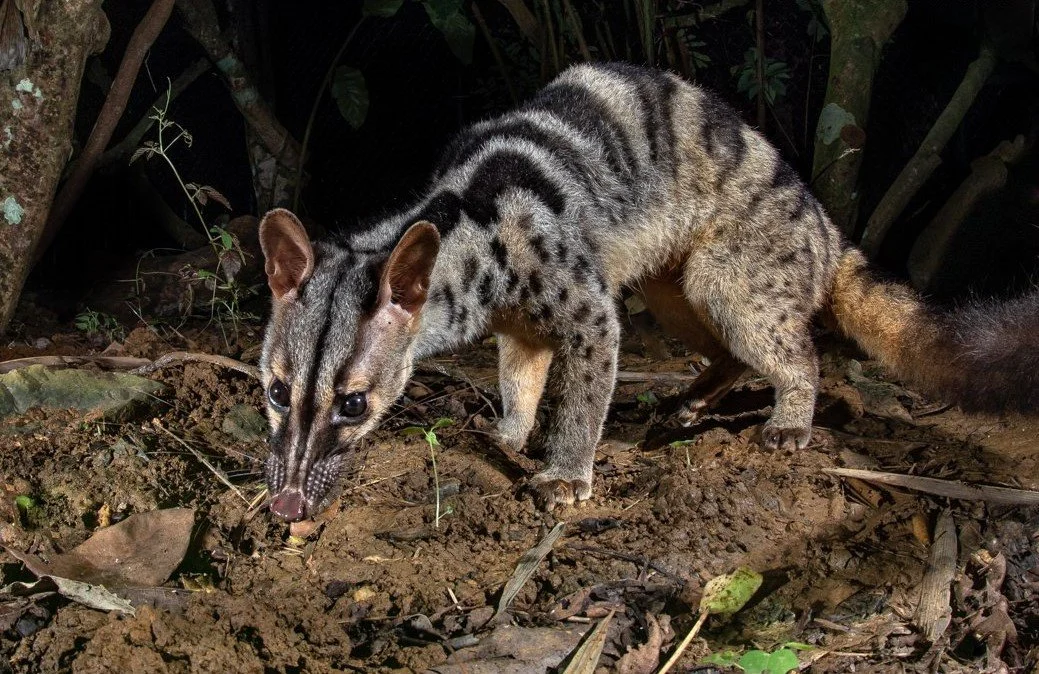Species
A collection of animal species from around the world.
*Sources for information and photos (unless they were taken by me) can be found at the bottom of each species profile.
Firefly Squid
Each spring, thousands of firefly squid gather in Japan’s Toyama Bay and light up the water with their neon-blue bioluminescence. After laying and fertilising their eggs, they die. A year later, their offspring will return to do the same.
White-rumped Vulture
The white-rumped vulture was once India’s most common vulture — and perhaps the most numerous large bird of prey in the world. But between the mid-1990s and 2006, its population plummeted by 99.9%, and it’s now considered critically endangered.
Asian Koel
The Asian koel is a brood parasite that lays its eggs in the nests of other birds. The species is also sexually dimorphic: males are dark-feathered goths, while females are boldly streaked in brown and white.
Pig-nosed Turtle
The pig-nosed turtle is the sole surviving species in its family. It lives in the rivers of northern Australia and southern New Guinea, using its pig-like nose to "snorkel" without exposing the rest of its body.
Capuchinbird
The capuchinbird is named for its resemblance to Capuchin monks, with the brown plumage around its bald head looking like the monks’ hooded robes.
Rainbow Lorikeet
Rainbow lorikeets travel in nomadic flocks, following the flowering of trees — using their brush-tipped tongues to feed on nectar and pollen. At night, they roost communally, perching close together and occasionally hanging upside down or lying on their backs, feet in the air.
Bawean Hog Deer
The Bawean hog deer is the rarest deer in the world. It's only found on the small Indonesian island of Bawean and is considered 'critically endangered' — with an estimated population of fewer than 300 individuals.
Bald Parrot
The bald parrot is a species that lacks any head feathers — apart from some sparse bristles. Endemic to the east-central Amazon, its baldness might be an adaptation for eating fruit without getting its feathers sticky.
Chacoan Peccary
The Chacoan peccary was initially described as an extinct species from fossils discovered in 1930. In the early 1970s, a living population was found in an isolated area of Paraguay — in a region known as the Gran Chaco. This species is the largest and rarest of the three living peccaries.
Central Rock-Rat
The central rock rat lives in central Australia around and among rocks — sheltering in crevices during days that can reach a blistering 50°C (122°F). Threatened by bushfires and invasive predators, its range has shrunk by around 95%.
Paradox Frog
A paradox frog tadpole can grow to be 27 centimetres (11 in) long — the largest tadpole of any frog. It eventually metamorphoses into a shrunken adult frog, only some 7 centimetres (2.7 in) long.
Madame Berthe's Mouse Lemur
Madame Berthe's mouse lemur is the smallest primate in the world. On average, it measures 10 centimetres (3.9 in) plus a 13-centimetre (5-in) tail and weighs just 33 grams (1.2 oz) — lighter than a golf ball.
Blue-eyed Ground Dove
The blue-eyed ground dove was believed to be extinct for 75 years — until twelve were rediscovered in the Brazilian Cerrado in 2015. Current population estimates range from over 250 individuals to as few as 16.
Owston's Civet
Owston's civet is a cryptic creature from the Annamite Mountains, straddling the border of Vietnam and Laos. With its skinny snout, it sniffs and searches through leaf litter for its favourite food: earthworms.
Gollum Galaxias
Gollum galaxias — with their big eyes and flattened faces — are named for their resemblance to The Hobbit and The Lord of the Rings character. These 7-centimetre (2.8 in) fish live in the southern reaches of New Zealand and are considered 'critically endangered'.
Southern Pied-Babbler
Southern pied-babblers appoint a sentinel to stand watch while the rest of the family forages on the ground. The sentinel sings a “watchman’s song" — continuously updating its family with information — and if it spots danger, its song turns into a harsh alarm.
Horned Marsupial Frog
The horned marsupial frog has the largest eggs of any living amphibian. The female carries the eggs in a pouch on her back, each in its own chamber, until they emerge as fully-formed froglets.
Iriomote Cat
The Iriomote cat occupies the smallest habitat of any wild cat on Earth — found only on Japan's southern Island of Iriomote — with its current population estimated to be around 100 individuals.
Blakiston's Fish-Owl
Blakiston's fish-owl is one of, if not the largest owl species in the world, with a wingspan reaching 2 metres (6.6 ft) and a weight exceeding 4 kilograms (8.8 lb). It is endangered — it's estimated that less than 2,000 individuals hunt the cold rivers of northeast Asia.





















